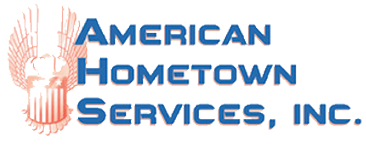Water damage to carpets can be a homeowner’s worst nightmare. Whether it’s due to a burst pipe, flooding, or a leaking appliance, the aftermath can lead to mold growth, unpleasant odors, and potential health hazards. Prompt and thorough cleaning is essential to restore your carpet and protect your home. This guide, brought to you by American Hometown Services, provides a comprehensive approach to cleaning carpets after water damage, ensuring safety and effectiveness.
Assessing the Situation
Before diving into cleaning, it’s crucial to assess the extent of the water damage. The source of the water—clean, gray, or black—determines the necessary cleaning approach. Clean water from a broken pipe is less hazardous than water from a flood or sewage backup. Understanding this distinction helps in deciding whether professional help is needed or if DIY methods will suffice.
Immediate Water Extraction
Time is of the essence. The longer water sits on your carpet, the higher the risk of mold growth and fiber degradation. Use a wet/dry vacuum to extract as much water as possible. If the carpet is heavily saturated, consider removing it to facilitate drying.
Thorough Drying
After water extraction, drying the carpet and underlying padding is paramount. Employ fans, dehumidifiers, and open windows to increase airflow and reduce humidity. Depending on the severity, this process can take 24 to 48 hours. Ensure that both the carpet and the subfloor are completely dry to prevent mold proliferation.
Deep Carpet Cleaning & Disinfection
Once dry, it’s time to clean the carpet. Use a carpet cleaner or rent a professional-grade machine. Opt for cleaning solutions appropriate for your carpet type. This step not only removes dirt and stains but also disinfects the fibers, eliminating bacteria and mold spores.
Odor Removal & Mold Prevention
Lingering odors can be a sign of mold or mildew. To combat this, apply mold inhibitors and odor neutralizers. These products help in preventing mold growth and ensuring your carpet remains fresh. If odors persist, it might indicate deeper issues requiring professional intervention.
Evaluating the Need for Replacement
In some cases, carpet cleaning may not suffice. If the carpet has been exposed to contaminated water or has extensive mold growth, replacement might be the best option. Professional cleaners can assess the damage and advise on whether cleaning or replacement is more appropriate.
Ongoing Maintenance After Water Damage
Even after a thorough cleaning, ongoing maintenance is crucial to protect your carpet and prevent future problems. Regular vacuuming and periodic deep cleaning help remove lingering dirt and moisture that could encourage mold growth. Additionally, monitoring areas prone to water exposure—such as near windows, plumbing fixtures, or basements—can help catch potential issues early. Using area rugs or waterproof barriers in high-risk zones can also extend the life of your carpet. Staying proactive ensures that your home remains safe, healthy, and comfortable long after the initial water damage has been addressed.
Water Damage Restoration, Mold Remediation Services & More in Quincy, Macomb, Hamilton, Warsaw & East Alton Illinois | Hannibal, Missouri
Cleaning carpets after water damage is a meticulous process that requires prompt action and thoroughness. By following these steps, you can restore your carpet’s appearance and ensure a safe living environment. Remember, when in doubt, consult with the professionals at American Hometown Services to achieve the best results.






